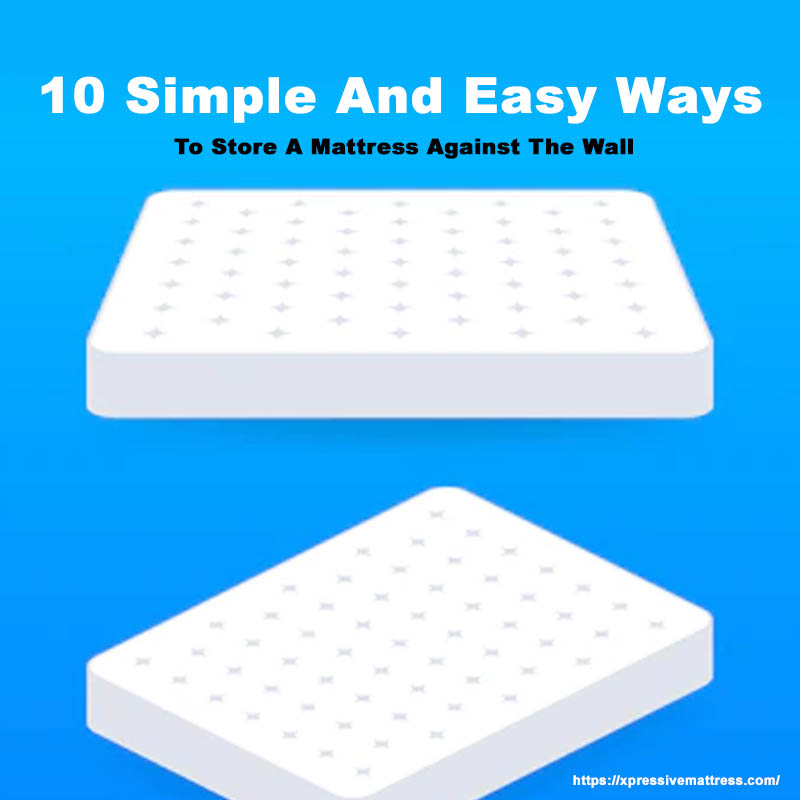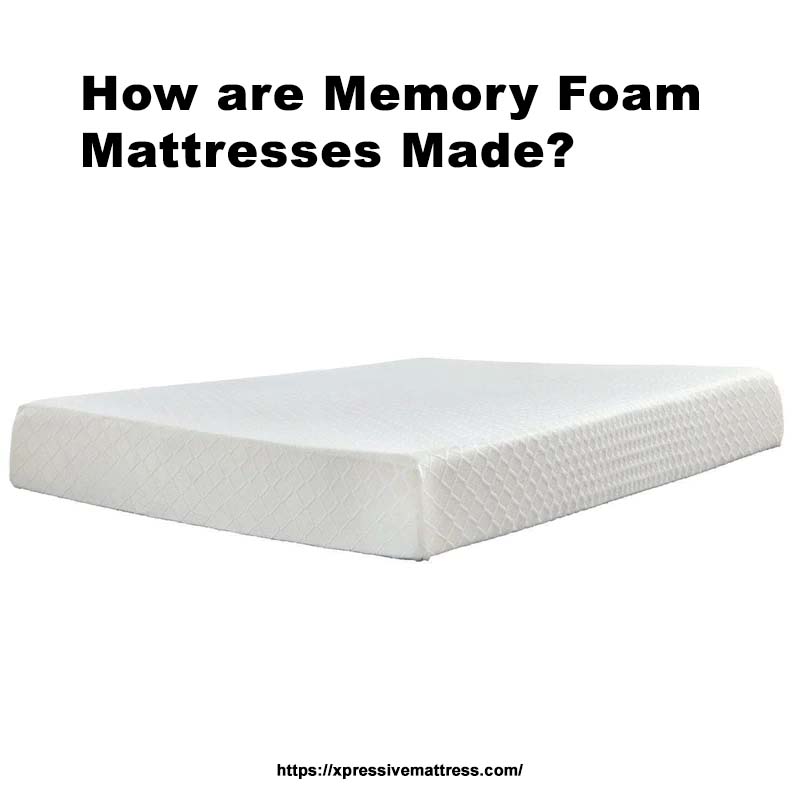Cleaning a mattress is an important task that should not be overlooked.
It can help to improve the quality of your sleep, reduce allergens and dust mites in your bedroom, and extend the life of your mattress!
Here are some tips on how to clean a mattress:
- Vacuum it regularly.
- Spot-clean any stains with a mild detergent or baking soda.
- Use an upholstery cleaner for deeper cleaning if needed.
- Air out the bedding outside when possible.
With these simple steps, you’ll have a fresh-smelling, comfortable sleeping surface every night.
Plus, peace of mind knowing that you’re taking good care of one of your most valuable investments!
What Are The Reasons To Clean A Mattress?
Cleaning a mattress is important for many reasons.
- It helps to keep the bed free from dust mites and other allergens that can cause health problems such as asthma or eczema.
- Regular cleaning will help extend its life by removing dirt and oils, which can break down fabrics over time.
- Keeping your mattress clean ensures you get a good night’s sleep. No one wants to sleep on an unclean surface!
Cleaning your mattress keeps it looking fresh and improves air quality in bedrooms where people spend most of their nights resting!
Here are some of the key ways in which you should clean your mattress:
- Vacuum regularly – this removes any debris like hair or crumbs.
- Spot-clean stains with mild detergent.
- Use baking soda every few months to absorb odors.
- Flip/rotate once per season so wear is evened out across both sides of the bedding material.
How To Remove Dust Mites And Allergens?
Dust mites and allergens can be a real nuisance.
To remove them, you need to take the following steps:
- Vacuum regularly – Use an appropriate vacuum cleaner with a HEPA filter for best results. This will help reduce dust particles in your home.
- Wash bedding weekly – This includes sheets, pillowcases, and blankets. Use hot water (at least 130°F/54°C).
- Keep humidity low – Dust mites thrive in humid environments, so keep indoor relative humidity below 50%. You may want to invest in a dehumidifier if necessary.
- Remove carpets and rugs – Carpets are known breeding grounds for dust mites, so it’s best to get rid of them or replace them with hardwood floors.
- Use allergen-proof covers on mattresses and pillows – These special mattress encasements prevent allergens from entering the fabric while still allowing airflow, which helps regulate temperature better than traditional fabrics.
- Clean upholstered furniture often – Upholstery is another common source of dust accumulation. It needs regular cleaning using steam cleaners or vacuums equipped with specialized attachments designed specifically for such tasks.
- Wash stuffed animals frequently – Stuffed toys should also be washed at least once every two weeks as they tend to accumulate large amounts of dirt over time. Due to their soft surfaces trapping debris easily when handled by children playing around indoors without proper supervision.
- Keep windows closed during high pollen season – Pollen grains released outdoors can enter homes via open windows, thus increasing levels inside significantly. Closing any openings until after peak times have passed would greatly reduce exposure risks associated with allergies caused by airborne irritants like pollens, .etera.
- Change filters monthly – Air conditioning systems require frequent maintenance, including replacing old filters each month since dirty ones become clogged quickly. That leads to reduced overall efficiency and increased health hazards posed by occupants living within affected areas too!
What Tools And Products Are Required To Clean A Mattress?
Cleaning a mattress is important to keep your bedroom clean and healthy.
You will need the following tools and products:
- A vacuum cleaner with an upholstery attachment.
- Soft brush or cloth for dusting.
- Mild detergent (such as dish soap).
- Baking soda.
- White vinegar.
Hydrogen peroxide solution.
- First, use the vacuum to remove any dirt or debris from the surface of your mattress.
- Next, sprinkle some baking soda over it and sit for at least 15 minutes before vacuuming again to absorb odors.
- Then mix equal parts water and mild detergent in a spray bottle – spritz lightly onto stained areas only – then blot dry using paper towels until the stain disappears completely!
- Finally, combine one cup of white vinegar and hydrogen peroxide in another spray bottle. Mist the entire top side evenly but don’t saturate the fabric too much. Allow time to air-dry naturally afterward!
With these simple steps, you can keep your bedding fresh and smelling all year round!
How To Clean Mattress Stains?
Cleaning mattress stains can be a tricky task.
Here are some tips to help you get the job done:
- Start by vacuuming your mattress with an upholstery attachment. This will remove any dirt and debris that accumulated over time.
- If there is a stain on the surface of your mattress, use a mild detergent mixed with warm water to spot-clean it.
- Mix one part white vinegar and two parts cold water for tougher stains like blood or urine to create an effective cleaning solution.
- Use either paper towels or cloths soaked in the mixture above to blot stubborn spots from mattresses – never rub!
- Allow plenty of drying time before putting sheets back onto bedding – at least 24 hours if possible.
- To keep your mattress fresh between deep cleansings, sprinkle baking soda across its entire surface once every few months, then vacuum off after 15 minutes.
Following these steps should ensure that all those pesky marks disappear quickly so you can enjoy sleeping soundly again soon!
How To Sanitize Mattress With Vinegar And Baking Soda?
Sanitizing your mattress with vinegar and baking soda is a great way to keep it clean.
Here’s how:
- First, vacuum the entire mattress surface using an upholstery attachment on your vacuum cleaner. This will remove any dirt or dust that has accumulated over time.
- Next, mix white distilled vinegar and water in a spray bottle.
- Then spritz this solution onto all mattress surfaces (avoiding seams).
- Allow it to sit for 15 minutes before blotting it dry with paper towels or cloths.
- Finally, sprinkle baking soda across every inch of the bedding – including pillows!
- Leave overnight so that odors can be absorbed by the powdery substance.
Then simply vacuuming away excess residue the next morning should do the trick! Important facts about sanitizing mattresses include
- Vinegar kills bacteria and germs while also deodorizing fabric.
- Baking Soda absorbs moisture which helps prevent mold growth.
- Regular cleaning/sanitation prevents allergens from accumulating.
- Vacuum regularly as part of routine maintenance
- Use natural products whenever possible instead of harsh chemicals.
- Always follow the manufacturer’s instructions when caring for furniture items like mattresses.
How To Use Steam Cleaners On Mattress?
Using a steam cleaner on your mattress effectively keeps it clean and free of dust mites, allergens, bacteria, and other contaminants.
Here’s how:
- Vacuum the entire mattress surface with a vacuum cleaner with good suction power before using any cleaning products or tools.
- This will help remove dirt particles from deep within its fibers.
- Fill up your steam cleaner according to manufacturer instructions – usually by adding water until you reach the maximum capacity line indicated in the tank’s interior walls (check the user manual for exact details).
- Set temperature control knob at desired level – typically between low-medium heat setting should be enough for most mattress types but always check product label first!
- Ensure not to use too hot temperatures as they can damage fabric material over time if used excessively often without proper care afterward, such as air drying.
- Start the steaming process slowly, moving across all areas evenly. That’s while avoiding direct contact with bedding items like pillows/blankets. Bedding accessories could get wet during the procedure due to their proximity being close when lying down flat against each other. So take extra caution here, please!
- Allow a sufficient amount of time after completion before allowing anyone back into the room where treatment took place since fumes emitted may still linger around even though no visible signs are present. Yet, these invisible gases might cause irritation upon inhalation, especially for those who suffer allergies and already existing conditions related to respiratory issues.
- Finally, once everything cools off completely then, proceed to the next step, which would involve vacuuming the same area again. Make sure there isn’t anything left behind, liquid from solid debris; otherwise, you risk damaging furniture surfaces nearby carpets or rugs floors.
What Are The Precautions To Keep In Mind While Cleaning A Mattress?
When cleaning a mattress, it is important to keep the following precautions in mind:
- Vacuum your mattress regularly using an upholstery attachment on low suction power. This will help remove dust and dirt particles that can accumulate over time.
- Spot-clean any stains with a mild detergent or baking soda mixed with water. Use a soft cloth for scrubbing and blotting dry afterward.
- Avoid harsh chemicals such as bleach when spot-cleaning, as these may damage the fabric of your mattress or cause discoloration/staining if not used properly!
- Air out your bedding by opening windows during sunny days – this helps reduce moisture buildup, which could lead to mold growth inside mattresses (especially those made from foam). Additionally, ensure you rotate them every few months so they wear evenly throughout their lifespan!
- Protect against allergens like pet dander and pollen by encasing both sides of the mattress in allergen-proof covers before putting sheets back on top. This prevents irritants from settling into fabrics while also providing extra protection against spills and accidents happening overnight too!
Final Thoughts: How To Clean A Mattress?
In conclusion, cleaning a mattress is an important task that should not be overlooked.
It can help extend your mattress’s life and free it from dust mites, allergens, and other bacteria.
To clean a bed properly, vacuum both sides with an upholstery attachment.
Spot treat any stains using baking soda or vinegar solutions.
Use steam cleaners for deep cleaning if necessary.
Rotate regularly, so all areas get equal wear over time.
Air out in direct sunlight when possible (weather permitting).
Replace every 8 years on average – sooner if there are signs of sagging or lumpiness.
With these tips in mind, you’ll have no problem keeping your bed fresh and comfortable!



